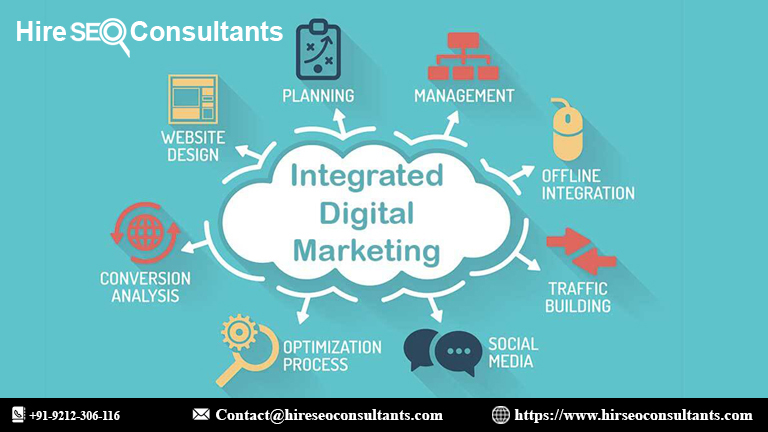Why CE Certification is Crucial for Your Product
The European Union is one of the largest global markets, making CE Certification essential for businesses targeting EU consumers. It enables unrestricted market access, ensuring products meet regulatory requirements.

I. Introduction
A. Definition of CE Certification
CE Certification is a mandatory conformity marking for products sold in the European Economic Area (EEA). It signifies that a product meets EU safety, health, and environmental protection requirements. By affixing the CE mark, manufacturers declare compliance with all relevant EU directives, ensuring the product is safe for use and suitable for sale in European markets.
B. Importance in the European Market
The European Union is one of the largest global markets, making CE Certification essential for businesses targeting EU consumers. It enables unrestricted market access, ensuring products meet regulatory requirements. Without CE Certification, products cannot be legally sold in the EEA. This compliance boosts confidence among distributors, buyers, and consumers, facilitating smoother trade and economic growth within the region.
C. Overview of Regulatory Framework
CE Certification is governed by EU directives, which define the safety and performance standards products must meet. Each directive targets specific product categories like machinery, medical devices, or toys. Compliance requires thorough understanding and adherence to these directives, risk assessment, and documentation. The framework ensures consistent product quality across the EU, safeguarding consumer welfare and fostering fair competition.
II. Understanding CE Certification
A. What CE Mark Represents
The CE mark indicates that a product conforms to essential health, safety, and environmental standards set by the EU. It does not signify product quality but ensures compliance with legal regulations. Affixing the CE mark is a manufacturer’s declaration that the product meets all applicable EU directives, providing assurance to regulators and consumers about its safety and compliance.
B. Industries Requiring CE Certification
CE Certification applies to a wide range of industries, including electronics, construction, medical devices, machinery, and toys. Products in these categories must meet the relevant EU directives before entering the EEA market. Each industry has specific requirements, ensuring that only compliant, safe, and environmentally-friendly products are available to consumers and businesses in the EU.
C. Role in Consumer Safety and Product Quality
CE Certification enhances consumer safety by ensuring products meet strict EU standards. It minimizes risks associated with unsafe or non-compliant goods. Although it is not a quality certification, the rigorous compliance process indirectly assures better product quality, as manufacturers must meet comprehensive technical, safety, and performance benchmarks during certification.
III. Benefits of CE Certification
A. Market Access to the EU
CE Certification is mandatory for selling products in the EEA. It eliminates trade barriers within the EU, allowing manufacturers to access 27 member countries seamlessly. This certification ensures products comply with all EU regulatory requirements, granting businesses the legal right to distribute their goods freely across the European market.
B. Increased Consumer Trust and Credibility
The CE mark boosts consumer confidence by demonstrating that a product adheres to EU safety and health standards. It builds trust and credibility for manufacturers, as customers are more likely to choose certified products. This certification acts as a reliable assurance of compliance and commitment to safety.
C. Competitive Advantage for Businesses
CE Certification enhances a company’s reputation, setting it apart from competitors. It opens doors to lucrative European markets and demonstrates a commitment to global standards. Businesses with CE-certified products often gain a competitive edge by ensuring compliance, safety, and environmental responsibility, which resonate with consumers and partners alike.
IV. Key Requirements for CE Certification
A. Identifying Applicable Directives
Manufacturers must first determine which EU directives apply to their products, such as those for machinery, electronics, or medical devices. Each directive outlines specific safety, health, and environmental standards. Identifying the right directives is critical to ensuring compliance and avoiding potential legal issues during the certification process.
B. Conducting Risk Assessments
A thorough risk assessment identifies potential hazards associated with the product. This involves evaluating risks related to safety, health, and environmental factors, ensuring compliance with EU standards. The findings guide manufacturers in addressing deficiencies and implementing necessary safety measures before certification.
C. Preparing Technical Documentation
Technical documentation is essential for CE Certification, serving as evidence of compliance. It includes product design details, test reports, user manuals, and risk assessments. Proper documentation demonstrates adherence to EU directives, ensuring that regulators and notified bodies can verify compliance easily.
V. The CE Certification Process
A. Determining Applicable Standards
Manufacturers must identify the specific EU standards relevant to their product. This involves consulting harmonized standards and EU directives that define safety, health, and environmental requirements. Clear understanding ensures the certification process targets the correct regulations, reducing delays and non-compliance risks.
B. Testing and Evaluation Procedures
Products must undergo rigorous testing to verify compliance with applicable EU standards. Tests focus on safety, performance, and environmental impact. Depending on the product category, testing may be conducted in-house or by an accredited notified body, ensuring the product meets all regulatory requirements.
C. Declaration of Conformity and Affixing the CE Mark
After successful testing, manufacturers prepare a Declaration of Conformity, affirming compliance with EU directives. The CE mark is then affixed to the product, signifying adherence to required standards. This step finalizes the process, allowing legal entry into the EEA market.
VI. Challenges in Achieving CE Certification
A. Understanding Complex Regulations
Navigating EU directives can be challenging due to their complexity and specificity. Manufacturers often struggle with interpreting the requirements for their product category. Comprehensive understanding and expert guidance are crucial to avoid costly errors or delays during certification.
B. Meeting Technical and Safety Standards
Compliance with stringent safety and technical standards demands precision and thorough preparation. Manufacturers must design and test products meticulously to align with EU requirements. Failure to meet these standards can lead to rejection or market restrictions.
C. Navigating Documentation and Compliance
Preparing accurate technical documentation and maintaining compliance with evolving EU directives can be daunting. This requires attention to detail and continuous updates to align with regulatory changes. Proper planning and expert support simplify this process.
VII. Role of Notified Bodies
A. Importance of Notified Bodies in the Certification Process
Notified bodies play a vital role in evaluating and certifying products that require third-party assessment. They conduct tests and audits to ensure compliance with applicable directives. Their involvement is crucial for products with higher safety risks, guaranteeing reliable certification.
B. Choosing a Recognized Notified Body
Selecting the right notified body ensures accurate evaluation and smooth certification. Manufacturers should choose organizations with expertise in their product category and accreditation by the EU. A reliable partner streamlines the process and ensures compliance.
C. Collaboration for Testing and Approval
Working closely with notified bodies facilitates efficient testing and approval. Regular communication helps manufacturers address deficiencies and meet compliance requirements. This collaboration ensures timely certification and adherence to EU standards.
VIII. Common Myths About CE Certification
A. CE Mark as a Quality Symbol
A common misconception is that the CE mark represents product quality. In reality, it signifies compliance with EU safety, health, and environmental directives. While meeting these standards often improves product quality, the CE mark itself is not a quality assurance label.
B. Applicability Only for European Companies
CE Certification is not limited to European manufacturers. Any company, regardless of location, must obtain CE Certification to sell products in the EEA. This ensures all products in the EU market meet uniform safety and regulatory standards.
C. Self-Certification vs. Third-Party Involvement
Some believe all CE Certifications require third-party assessment. However, certain products allow self-certification if they meet specific directives. For high-risk products, third-party notified body evaluation is mandatory to ensure compliance with stringent safety requirements.
IX. Conclusion
A. Summary of CE Certification Importance
CE Certification is essential for entering the EU market, ensuring compliance with health, safety, and environmental standards. It enhances consumer confidence, facilitates trade, and safeguards product quality. Businesses aiming for EU market success must prioritize CE compliance.
B. Encouragement for Compliance
Achieving CE Certification may seem challenging, but it is a vital step for global market access. By committing to compliance, manufacturers protect consumers, enhance credibility, and unlock new business opportunities.
C. Resources for Guidance and Support
Numerous resources, including EU directives, notified bodies, and consulting services, assist manufacturers in achieving CE Certification. Leveraging expert support ensures smooth navigation of the process, ensuring compliance and market readiness.
What's Your Reaction?


















